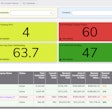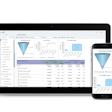
Among global, multi-industry software companies, Sage has seemed increasingly committed to contractors and the property sector with construction enterprise resource planning (ERP) options like Sage 100 Contractor, Sage 300 Construction and Real Estate and Sage Intacct Construction Edition.
Sage has demonstrated that it has multiple ways to extend these and other offerings with products that may be white-labeled—as it does with products from companies like Operix or Penta. So its acquisition of Huntington Beach, Cal.-based Corecon Technologies is notable in part because Sage has other options to if they want to add products to a line card.
Founded in 1999 in California, Corecon multi-tenant software-as-a-service (SaaS) construction software for preconstruction and project management Customer organizations include general contractors, construction managers, subcontractors and custom homebuilders.
“With construction businesses at different stages in their cloud adoption, it is important we provide technology that simplifies complex processes and helps them to work more efficiently and grow,” Sage Vice President Product Construction and Real Estate Julie Adams said. “This acquisition closely aligns with our drive to bring the latest cloud technology to our increasing number of construction customers. By combining our trusted financial solutions with innovative cloud preconstruction and project management capabilities, we will deliver a system that can run every part of a construction business.”
“Sage shares many of the same values and ambition as Corecon which makes it the perfect fit for our colleagues, products, partners and customers,” said Norman Wendl, CEO and Founder of Corecon. “We are excited about joining Sage on its journey to help deliver market-leading solutions to the construction industry. What’s more, the acquisition will allow our product suite to accelerate and reach new heights, benefiting our customers as well as their clients and business partners.”
Check out our Product Snapshot Video Review of the Sage Construction ERP product line!
Best-of-Breed vs ERP
With the rise of application programming interfaces (APIs) and cloud-native applications designed around the API, contractors and construction teams should find it easier to integrate these modern tools with each other than will be the case with legacy software applications. But there are still benefits that accrue when functionality used in different parts of the business or different phases of the project lifecycle, are designed to work more natively together. IRONPROS got a briefing from Adams in the days following the Corecon announcement.
IRONPROS: Why make this type of acquisition, into the value-creation side of the construction business, right now?
JULIE ADAMS: “So we've been in the construction industry for a long time, and we have a rich history in construction. And as we are working with our customers in the next wave of innovation, as we move to the cloud solutions, what we're hearing more and more from our customer base and from prospects is that they really want more of an end-to-end solution from, from Sage, because it is complicated to bring together a bunch of disparate systems and kind of make it all integrate and work together well. And sometimes they just want something included. So we really looked for a solution like Corecon to complement our deep financial tools and capabilities, and bring in native cloud reconstruction and project management as part of our overall end to end suite.”
Initially, Corecon will integrate with Sage Intacct. That Intacct integration was just made available a month or so ago, and it will go in our Sage Intacct marketplace partner area. The other thing is that we're going to integrate Corecon with is Sage 100 Contractor, and Sage 300 CRE as well, because we have a very loyal customer base on those products, and what they're able to do is leverage their technology investments in the solutions that they already know and love.”
And then, they can take advantage of some of the native cloud innovations that Corecom brings to the table and complement their technology strategy, and essentially evolve to the cloud. Now Sage 100 Contractor and Sage 300 CRE, they actually already do have project management capabilities as part of that footprint. But what Corecon brings to the table is the cloud aspect of it, which enables collaboration, not only within the company, but it also provides collaboration across company boundaries. So from a political perspective, I can send out invitations to bid to my subs, and my specialty contractors could basically click a link, go into Corecon, access the drawings, figure out how they want to bid, submit their bids, and it's all basically fully digitized and the collaboration is all there. Then from a project execution perspective, as you know, a construction project is not one company executing, it is multiple companies coming together, and collaborating to make that project is successful. And so it also provides that capability not only to manage construction projects yourself, your projects, but it enables you to collaborate and connect with your subs and your contractors and and your general contractors—they all connect on this platform.
You’re able to share documents, manage change, manage RFIs, manage time, clock in clock out, take pictures and start that RFI process and change management process. And it really streamlines that entire workflow across that ecosystem.
IRONPROS: So connecting with external companies that you might be collaborating with, is that strictly through humans going into a portal? Or is there a degree of integration or capture of analytics and the ability to standardize data from different sources dynamically?
JULIE ADAMS: When we're talking about reporting and analytics, inside the product, we have a rich set. We also have longer term strategies, bringing together Corecon, Sage Intacct, Sage 100 and Sage 300 onto a data platform where you can aggregate a whole bunch of different sources and create Insight and analytics on top of that.
In terms of connecting across that ecosystem, we have longer term visions of further automating and connecting all of the systems. But for right now, it is an invitation to come to a portal like experience where you can basically share all of these documents across that ecosystem and workflows across those systems. And as far as Corecon’s commercial model is that that you get all the users, you, you care to have under one subscription. That way, you're then not disincented to open that to your customers.
IRONPROS: So what is the pricing strategy for buying Corecon going forward?
JULIE ADAMS: So there is current pricing for Corecon today. And we are going to be evaluating pricing and packaging, as we bring it forward into the Sage family. But for the current pricing right now, there's two models. There's a per-user pricing, so you can have project managers and employees do time cards and things like that. But even in that scenario, there is Corecon Team Link, where essentially you can send as many invitations as you want, engage with contractors or subcontractors, as many as you want. So that's unlimited. And then we also have another model, which we call the max employee plan. It’s about how big are you as a company. What's the total number of companies or total number of employees you have in the company, and then you could basically have up to that number of project managers and employees accessing the system. And again, when you start to engage with the ecosystem, across company boundaries, that is still unlimited in that scenario, as well.
IRONPROS: We are a publication definitely lives in the world of what are people evaluating and due diligence on. How are you looking at, like evolving the model between the different products to create a more end to end solution? I had an interview the other day with my buddy, Hugh Seaton, and one of the things that he holds up as a question you want to ask construction software vendors right now is -- to what extent do you see yourself as being one course, like an ingredient, and how much do you want to be the whole meal? What do you think, about what Sage’s position is when it comes to that.
JULIE ADAMS: So, we are going to be expanding our breadth and depth of solutions that we provide for the construction industry to cover not only financials but preconstruction construction operations, as well as HR and payroll. So we're, going to be expanding the breadth of solutions across all of those pillars, even though we're doing so we also are absolutely 100%, firmly committed to this idea of power of choice for our customers. So regardless of it, we will work with our ecosystem of partners. We're going to continue to invest in our ecosystem of partners and grow that community.
And what we want is to make sure that our customers have the right combination of Sage and partner-provided solutions that it's going to work optimally for them. So we will be an open platform, always. There is no there is not nothing in it that would be against our core principles of of providing the right solutions for our customers. And so for example, now that we've added pre-construction and construction operations, as well as payroll capabilities, we still have in our marketplace estimating solutions from different vendors. We have payroll solutions from different vendors. And we have project management solutions from different vendors as well. And I think it's really important that we look at how do we put it all together so that it's going to be optimized for them. And when it comes to the ecosystem, it's about providing open platform, open API's. And we actually do work with all of those customers to optimize the integration.
IRONPROS: I mean, obviously, you make the investment in the additional functionality that comes with Corecon, and you want to rationalize that in terms of the rest of the business. If I'm running, you know, Sage 100 contractor right now, am I really getting a screaming deal on Corecon, and vice versa? Is there going to be pricing leverage where you are making an offer they can't refuse. What's your thinking on making pricing a really big part of why someone wants to just do more business with Sage?
JULIE ADAMS: We're not gonna give it away completely for free, however, we are going to make it very attractive, no doubt, right? So because they're already a customer of ours, and so we could provide more value to our customer base for high value and return on the investment that they make with us. Some of the details we're still working through.
IRONPROS: One thing we see in various companies that are also doing acquisitions, like Trimble, where they are harmonizing the acquired applications on the back end and offering aggressive pricing as the footprint grows on the front end. And you see some things like the Oracle model where one of the main reasons you spend more with Oracle is that you have Oracle Universal Credits to use.
So as customers engage and buy Corecon as part of Sage, can they work with their existing Sage partner? Is Corecon being sold in net new opportunities going forward?
JULIE ADAMS: Yes, that is absolutely the intent. Our, our channel is looking at how do they ramp up their business on the on this front, for sure. The other thing to know is that we are also in what we internally call the standalone business, in that Corecon itself, already exists today. And it integrates with QuickBooks, it integrates with Xero. Now it also integrates with Sage Intacct Sage 50 Canada and it's got a slew of connectors to financial back office systems. We're going to continue to grow that business as well. So, you know, we want construction management to be kind of a lead product in in the various markets. So a customer could start by buying construction management capabilities, like Corecon, and then add financial capabilities later when they're needed.
BOTTOM LINE: This is an interesting move by Sage and one we may see repeated. While IRONPROS predicted merger and acquisition activity would be a significant factor this year, acquisitions like the Sage-Corecon deal make sense for both parties, and ultimately for users. Sage gets a broader footprint of functionality that extends from the bean counters and executives into the value creation side of construction, where technology is evolving rapidly. Gone are the days when Construction ERP meant “Excel Running Projects” and an actual ERP would be used primarily in the general ledger and finance. Gone too are the days when projects disappear to management once they enter work-in-progress. Sage and Corecon customers who want to avoid SaaS sprawl and tighten their budget might find an opportunity here. And Corecon gets deeper resources and powerful distribution.















